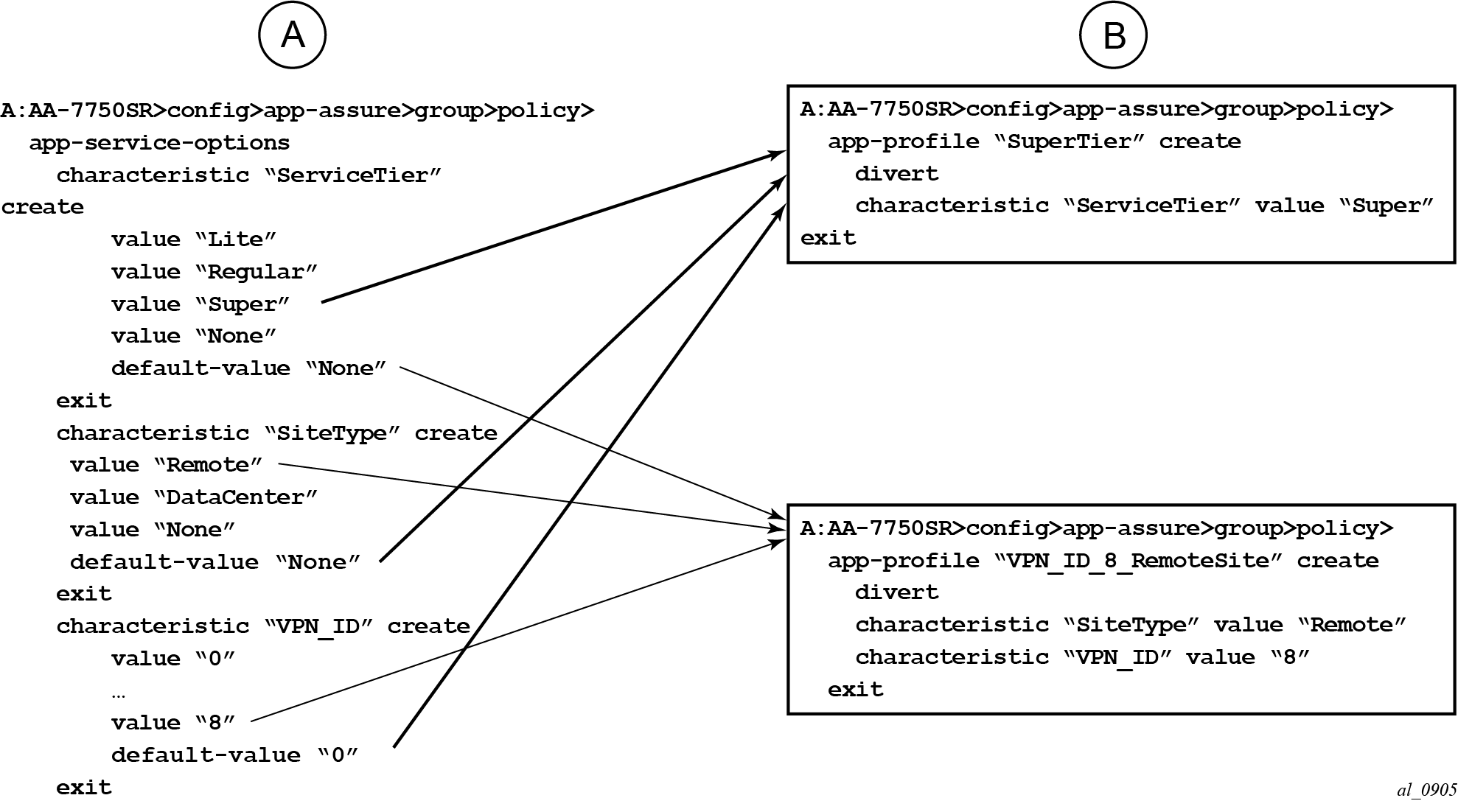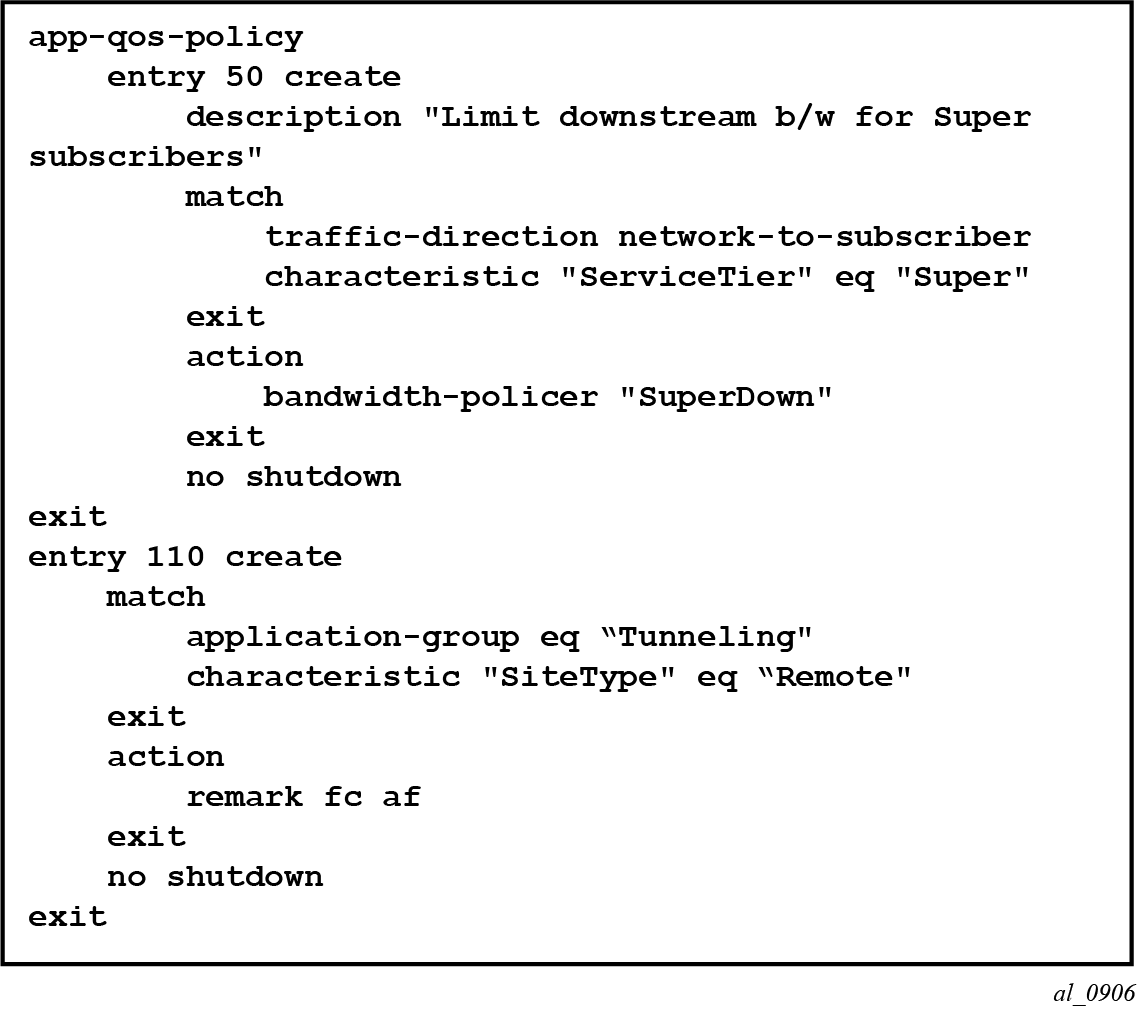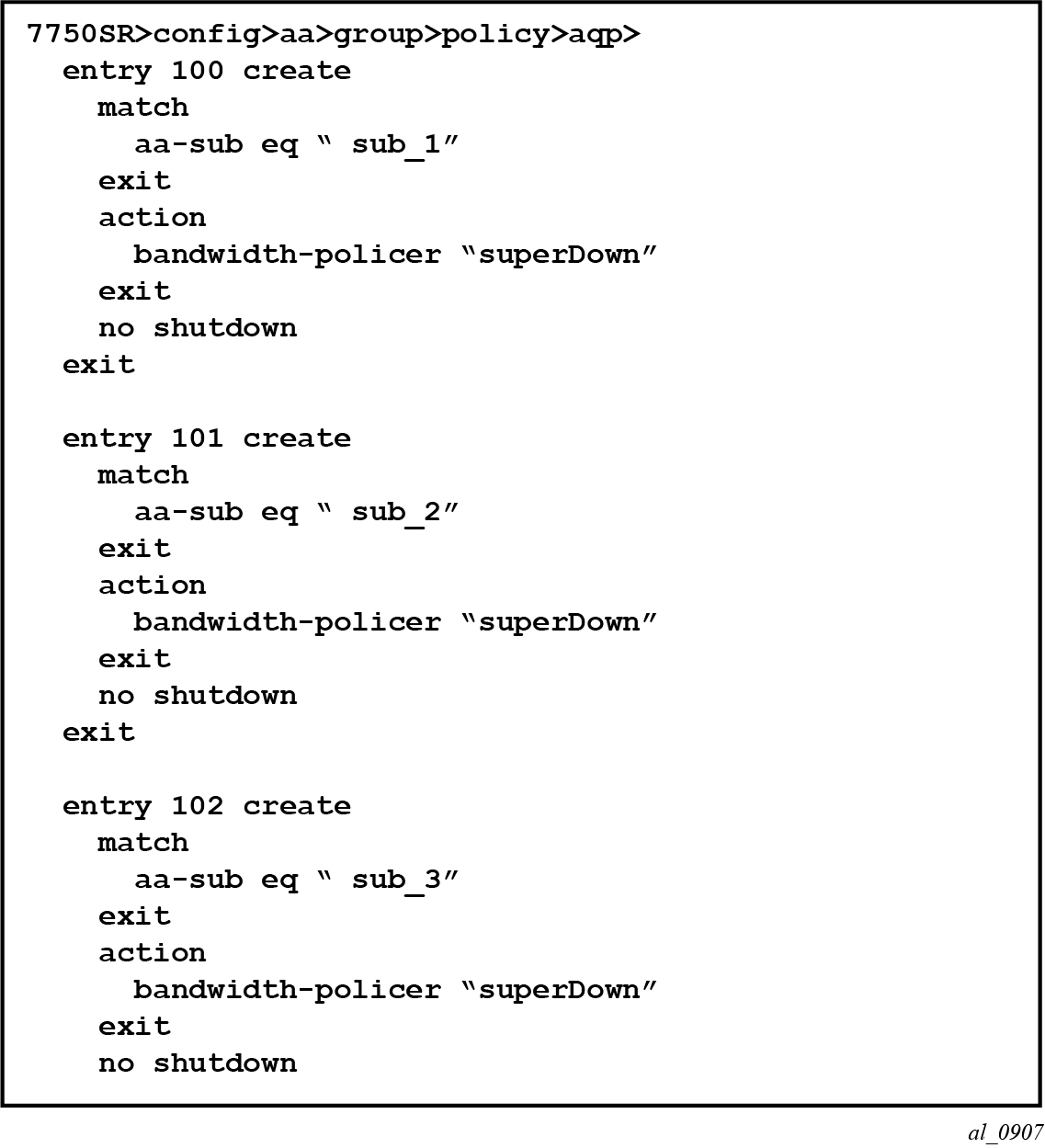ASOs are used to define service provider or customer visible network control (policy) that is common between sets of AA subscribers (for example, upstream/downstream bandwidth for a tier of AA service). ASO definition decouples every AA subscriber from needing subscriber-specific entries in the AQP for standard network services.
As an example, an operator can define an ASO called ServiceTier to define various HSI services (Super, Lite, and so on) (Figure: Configuration example A). The operator can then reference these defined ASOs when creating the App Profiles that are assigned to AA subscribers (Figure: Configuration example B).

Then, the defined ASOs are used in the AQP definition to determine the needed treatment or policy (Figure: AQP definition example).

Alternatively, if ASOs were not used in the previous example, then the operator would have to define a unique AQP entry for every subscriber. Each of these AQPs has its ‟match” criteria setup to point to the subscriber ID, while the action for all of these unique AQPs is the same for the same service (for Tier 1 service, the policer bandwidth is the same for all Tier 1 AA subscribers) (Figure: Single ASO example).

The example in Figure: Single ASO example, shows how the use of just a single ASO can save the user from having to provision an AQP entry every time a subscriber is created.
Other example uses of ASO entries include:
-
entry per application group that is to be managed, such as VoIP, P2P, HTTP
-
several entries where specific applications within an application group can individually be managed as service parameters, for example, HTTP content from a specific content provider, or streaming video from network television or games
-
HSI tiers (for example, Gold, Silver, and Bronze for specifying bandwidth levels)
-
VPN customer ID
Application characteristics are defined as specific to the services offered within the operator network. The operator defines ASO characteristics and assigns to each ASO one or more values to define service offering to the customers.
The following are the main elements of an ASO:
-
A unique name is applied to each characteristic.
-
The name is unique to the group-partition-policy, but the expectation is that characteristics are consistent network wide.
-
Operator-defined values (variables) are defined for each characteristic and are unique to each characteristic. A default value must be specified from the set of the values configured.
The following lists how ASO characteristics are used:
-
Application service options are used as input to application profiles.
-
AQP rule sets also use the ASO characteristics to influence how specific traffic is inspected and policies applied.
-
Multiple ASO characteristic values are allowed in a single rule.
Syntax checking is performed when defining application profiles and AQPs that include application characteristics. This ensures:
-
The characteristic is correctly identified.
-
In an app-profile and app-qos-policy when specifying a characteristic, the value must be specified. The ‟default-value” applies if a characteristic is not specified within an app-profile.